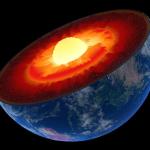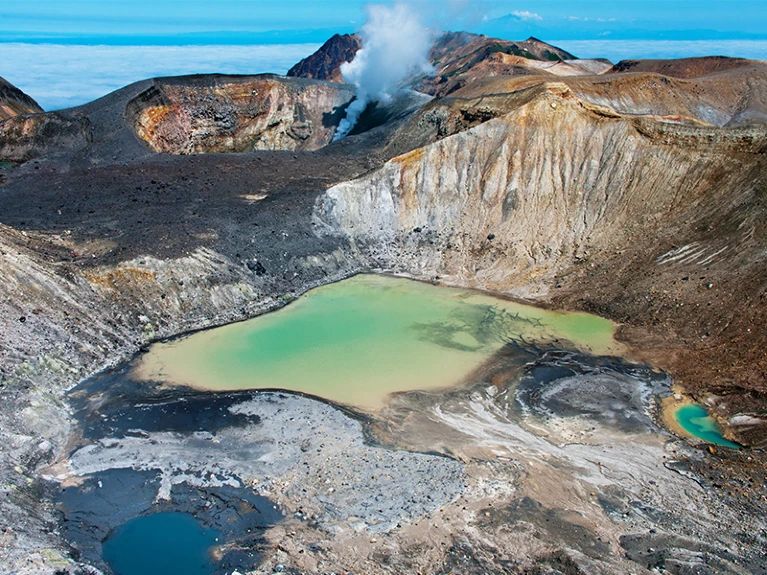Has Earth’s Inner Core Stopped Its Strange Spin?

Thousands of kilometres beneath your feet, Earth’s interior might be doing something very weird. Many scientists think that the inner core spins faster than the rest of the planet — but sometime in the past decade, according to a study, it apparently stopped doing so.
“We were quite surprised,” say Yi Yang and Xiaodong Song, seismologists at Peking University in Beijing who reported the findings today in Nature Geoscience1.
The results could help to shine light on the many mysteries of the deep Earth, including what part the inner core plays in maintaining the planet’s magnetic field and in affecting the speed of the whole planet’s rotation — and thus the length of a day. But they are just the latest instalment in a long-running effort to explain the inner core’s unusual rotation, and might not be the final word on the matter.
“I keep thinking we’re on the verge of figuring this out,” says John Vidale, a seismologist at the University of Southern California in Los Angeles. “But I’m not sure.”
Mysteries of the deep
Researchers discovered the inner core in 1936, after studying how seismic waves from earthquakes travel through the planet. Changes in the speed of the waves revealed that the planet’s core, which is about 7,000 kilometres wide, consists of a solid centre, made mostly of iron, inside a shell of liquid iron and other elements. As iron from the outer core crystallizes on the surface of the inner core, it changes the density of the outer liquid, driving churning motions that maintain Earth’s magnetic field.

Researchers have learnt about the inner core’s rotation by studying earthquakes that originated in the same region, such as the Kuril Islands (shown here), over decades. Getty
The liquid outer core essentially decouples the 2,400-kilometre-wide inner core from the rest of the planet, so the inner core can spin at its own pace. In 1996, Song and another researcher reported2 studying earthquakes that originated in the same region over three decades, and whose energy was detected by the same monitoring station thousands of kilometres away. Since the 1960s, the scientists said, the travel time of seismic waves emanating from those earthquakes had changed, indicating that the inner core rotates faster than the planet’s mantle, the layer just beyond the outer core.
Later studies refined estimates of the rate of that ‘super-rotation’, to conclude that the inner core rotates faster than the mantle by about one-tenth of a degree per year. But not everyone agrees. Other work has suggested that super-rotation happens mostly in distinct periods, such as in the early 2000s, rather than being a continuous, steady phenomenon3. Some scientists even argue that super-rotation does not exist, and that the differences in earthquake travel times are instead caused by physical changes on the surface of the inner core4.
Last June, Vidale and Wei Wang, an Earth scientist also at the University of Southern California, threw another spanner into the works. Using data on seismic waves generated by US nuclear test blasts in 1969 and 1971, they reported that between those years, Earth’s inner core had ‘subrotated’, or rotated more slowly than the mantle5. Only after 1971, they say, did it speed up and begin to super-rotate.
A rotational shift
Now, Yang and Song say that the inner core has halted its spin relative to the mantle. They studied earthquakes mostly from between 1995 and 2021, and found that the inner core’s super-rotation had stopped around 2009. They observed the change at various points around the globe, which the researchers say confirms it is a true planet-wide phenomenon related to core rotation, and not just a local change on the inner core’s surface.
The data hint that the inner core might even be in the process of shifting back towards subrotation. If so, something is probably happening to the magnetic and gravitational forces that drive the inner core’s rotation. Such changes might link the inner core to broader geophysical phenomena such as increases or decreases in the length of a day on Earth.
Still, many questions remain, such as how to reconcile the slow pace of the changes that Yang and Song report with some of the faster changes reported by others. The only way out of the morass is to wait for more earthquakes to happen. A “long history of continuous recording of seismic data is critical for monitoring the motion of the heart of the planet”, say Yang and Song.
“We just have to wait,” Vidale adds.
doi: https://doi.org/10.1038/d41586-023-00167-1
References
-
Yang, Y. & Song, X. Nature Geosci. https://doi.org/10.1038/s41561-022-01112-z (2023).
Song, X. & Richards, P. G. Nature 382, 221–224 (1996).
-
Pang, G. & Koper, K. D. Earth Planet. Sci. Lett. 584, 117504 (2022).
-
Yao, J., Tian, D., Sun, L. & Wen, L. J. Geophys. Res. Solid Earth 124, 6720–6736 (2019).
-
Wang, W. & Vidale, J. E. Sci. Adv. 8, eabm9916 (2022).
Alexandra Witze. I am a science journalist in Boulder, Colorado. I report on the earth, planetary and astronomical sciences. Find more recent thoughts at @alexwitze. My book ISLAND ON FIRE, coauthored with my husband Jeff Kanipe, is about the extraordinary 18th-century eruption of the Icelandic volcano Laki. Reach me at witzescience@gmail.com.
Nature is a weekly international journal publishing the finest peer-reviewed research in all fields of science and technology on the basis of its originality, importance, interdisciplinary interest, timeliness, accessibility, elegance and surprising conclusions. Nature also provides rapid, authoritative, insightful and arresting news and interpretation of topical and coming trends affecting science, scientists and the wider public.
First, to serve scientists through prompt publication of significant advances in any branch of science, and to provide a forum for the reporting and discussion of news and issues concerning science. Second, to ensure that the results of science are rapidly disseminated to the public throughout the world, in a fashion that conveys their significance for knowledge, culture and daily life.
Nature's original mission statement was published for the first time on 11 November 1869.
